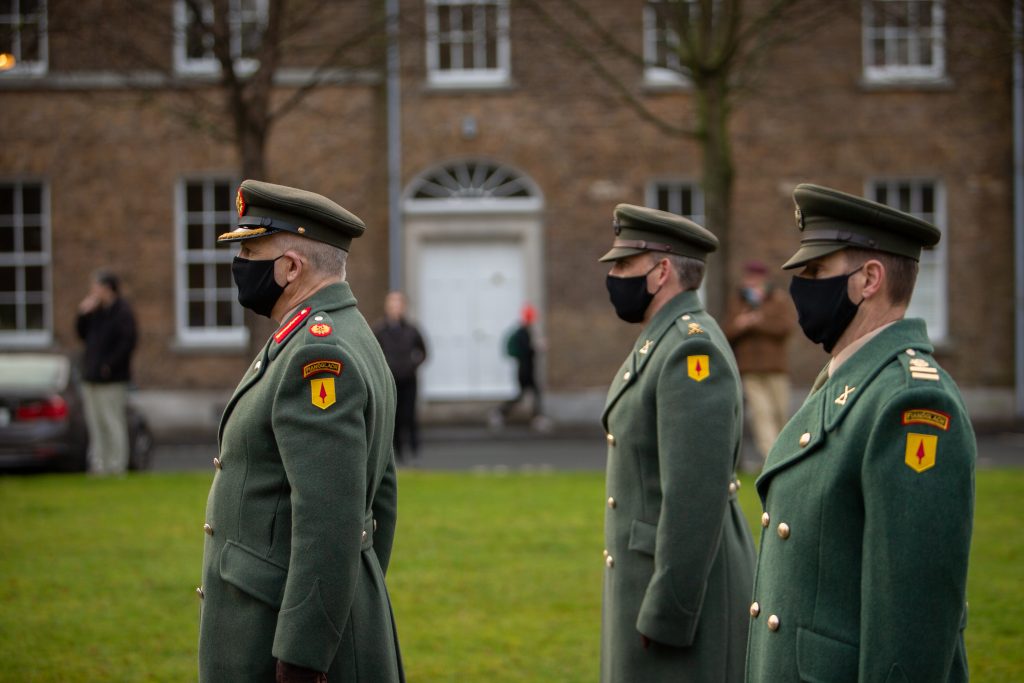
Defence Forces Mark Centenary of the Handover of Beggar’s Bush Barracks
Photos by John O’Byrne
Yesterday a ceremonial event was held by the Defence Forces to mark the centenary of the handover of Beggar’s Bush Barracks from the British authorities to the Irish Provisional Government on 31 January and 1 February 1922. In the footsteps of the Provisional Government troops, members of the 7th Infantry Battalion marched through the gates of Beggar’s Bush at 15:00 from Haddington Rd. and paraded on the barrack square. General Officer Commanding 2nd Brigade, Brigadier General Tony Cudmore presided over the ceremony.
Following the handover in 1922, the barracks became the first headquarters of the new army. It was vacated by the military in 1929. Today the barracks is home to the Irish Labour History Society Museum which is based in the former central garrison headquarters and the National Print Museum, which is based in the former Garrison Chapel.


At the end of the ceremony the 7th Infantry Battalion recreated the famous image of the Fianna Pipe Band and Dublin Guard.
Photos by John O’Byrne
















